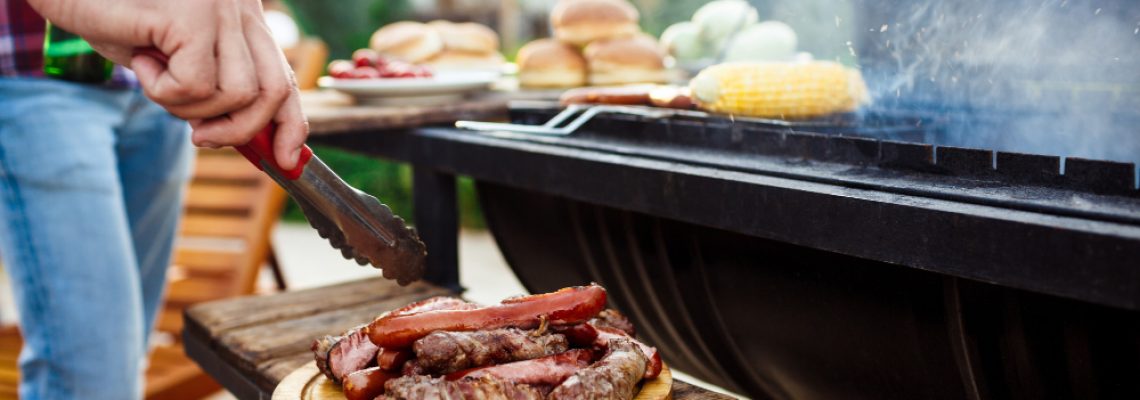Get ready to fire up the grills and embark on an exciting entrepreneurial journey in the sizzling world of BBQ rubs. Australia’s love for barbecues knows no bounds, and now is the perfect time to channel that passion into a thriving business opportunity. As you venture into the realm of BBQ rubs, you’ll not only tantalize taste buds but also carve a niche for yourself in this sizzling market.
Starting a BBQ Rub business in Australia opens up a world of possibilities to cater to the growing demand for exceptional flavors and unique culinary experiences. With Australians increasingly embracing the art of barbecuing, the market is ripe for a range of high-quality, handcrafted BBQ rubs that can enhance their grilling adventures.
Main reasons to start a BBQ Rub business
Growing Demand
The popularity of barbecuing is on the rise, and people are seeking high-quality, flavorful rubs to enhance their grilling experience.
Untapped Market
Despite the growing demand, the market for BBQ rubs in Australia still offers ample opportunities for new players to establish themselves and capture market share.
Passionate Customer Base
Australians have a deep-rooted love for barbecues, creating a loyal and passionate customer base eager to explore new flavors and products.
Unique Value Proposition
BBQ rubs allow for creative expression and customization, enabling you to develop unique blends and flavors that set your business apart from competitors.
Scalability
BBQ rubs can be produced in large quantities, making it a scalable business model that can accommodate growth and expansion.
Low Overhead Costs
Starting a BBQ Rub business requires minimal equipment and infrastructure, making it a cost-effective venture with higher profit margins.
Creative Outlet
Crafting BBQ rubs allows you to unleash your creativity by experimenting with different spices, herbs, and seasonings to develop distinctive flavors.
Branding Opportunities
Building a brand around your BBQ Rub business gives you the chance to connect with customers, establish brand loyalty, and create a unique identity in the market.
Versatile Product Range
BBQ rubs can be used on various meats, poultry, seafood, and even vegetables, catering to a wide range of customers and culinary preferences.
Business Flexibility
You have the freedom to choose your target market, distribution channels, and sales strategies, allowing for flexibility and adaptability as your business grows.
Potential for Expansion
As your BBQ Rub business gains traction, there are opportunities to diversify and expand into related product lines such as sauces, marinades, or even BBQ accessories.
Barbecue Community Engagement
Participating in BBQ events, competitions, and online communities allows you to connect with fellow enthusiasts, gather feedback, and build a strong network within the barbecue community.
Starting a BBQ Rub business not only satisfies your entrepreneurial aspirations but also caters to the growing demand for exceptional flavors in the thriving barbecue culture of Australia.
Steps on how to start a BBQ Rub Business
Research and Planning
Conduct thorough market research to gain insights into the demand for BBQ rubs in Australia. Analyze the existing market landscape, including competitors, their products, pricing, and distribution channels.
Identify the target audience for your BBQ rubs. Consider their preferences, demographics, and geographical location to tailor your products and marketing strategies accordingly.
Determine the key trends in the BBQ rub industry, such as popular flavors, regional variations, and emerging consumer preferences. This knowledge will help you stay ahead of the curve and cater to evolving tastes.
Identify any gaps or underserved niches in the market that present opportunities for your BBQ rub business. Differentiate yourself by offering unique flavors, premium quality, or specific dietary options.
Recipe Development and Testing
Begin by gathering a wide variety of spices, herbs, and seasonings that are commonly used in BBQ rubs. Research their flavor profiles and characteristics to understand how they can complement different types of meat or vegetables.
Experiment with different combinations and ratios of ingredients to create unique and flavorful BBQ rub recipes. Start with small batches and adjust the quantities to achieve the desired taste and balance.
Consider the target audience and their preferences while developing your recipes. Are they inclined towards bold and smoky flavors, or do they prefer a milder and more balanced taste? Keep in mind that tastes may vary across regions and demographics, so be open to adapting your recipes accordingly.
Test your BBQ rub recipes on various cuts of meat, such as chicken, pork, beef, or even seafood and vegetables. This will help you gauge how well the flavors complement different ingredients and cooking methods.
Compliance and Regulations
Familiarize yourself with the food safety regulations, labeling requirements, and any permits or licenses necessary to operate a food business in Australia. This includes understanding the relevant legislation and guidelines, such as the Food Standards Code, which outlines food safety practices and labeling regulations.
Contact your local council or regulatory authority to inquire about specific permits or licenses required for manufacturing and selling food products. They will provide you with detailed information on the application process and any inspections or audits that may be necessary.
Ensure that your manufacturing process meets the health and safety standards set by local authorities. This involves implementing proper hygiene practices, maintaining a clean and sanitary production facility, and adhering to safe food handling procedures.
Establish a Hazard Analysis and Critical Control Points (HACCP) plan, which is a systematic approach to identifying and controlling food safety hazards in your production process. This plan helps ensure that your BBQ rubs are safe for consumption and comply with food safety regulations.
Implement good manufacturing practices (GMP) to maintain high standards of hygiene, sanitation, and quality control throughout your production process. This includes proper storage of ingredients, regular cleaning and sanitization of equipment and utensils, and effective pest control measures.
Sourcing Ingredients and Suppliers
Begin by researching and identifying suppliers who specialize in providing high-quality spices, herbs, and seasonings. Look for suppliers who have a strong reputation for sourcing and delivering top-notch ingredients.
Consider attending trade shows, networking events, or reaching out to industry associations to connect with potential suppliers. These platforms can help you discover reliable suppliers and gain insights into the quality and variety of ingredients they offer.
Evaluate potential suppliers based on criteria such as product quality, consistency, pricing, and reliability. Request samples of their spices, herbs, and seasonings to assess their flavor profiles and ensure they align with your desired standards.
Establish relationships with local suppliers to ensure a steady and consistent supply of ingredients for your BBQ rubs. Local suppliers may offer advantages such as reduced transportation costs, faster delivery times, and the ability to develop a more personal and collaborative partnership.
Branding and Packaging
Develop a compelling brand identity that resonates with your target market and reflects the essence of your BBQ rubs. Start by defining your brand values, mission, and unique selling points. Consider the personality and image you want your brand to portray, whether it’s rustic, gourmet, fun, or traditional.
Conduct market research to gain insights into your target market’s preferences, including their visual aesthetics, values, and lifestyle. This information will help you create a brand identity that connects with your customers on an emotional level.
Craft a memorable and meaningful brand name that captures the essence of your BBQ rubs. It should be distinctive, easy to remember, and reflect the flavor profiles or the story behind your products.
Design a captivating logo and visual elements that align with your brand identity. Choose colors, fonts, and imagery that evoke the desired emotions and convey the quality and uniqueness of your BBQ rubs. Ensure that your branding is consistent across all touchpoints, including packaging, website, social media, and marketing materials.
Manufacturing and Production
Decide whether to set up your own production facility or outsource the manufacturing process to a reputable co-packer. Setting up your own facility provides greater control over the production process, but outsourcing can offer cost efficiencies and access to specialized equipment and expertise.
If you choose to set up your own production facility, secure a suitable space that meets local zoning and health department requirements. Consider factors such as size, layout, ventilation, and access to utilities. Install appropriate equipment and infrastructure needed for mixing, blending, packaging, and labeling your BBQ rubs.
Implement strict hygiene and sanitation practices in your production facility. Establish standard operating procedures (SOPs) for cleaning, sanitizing, and maintaining equipment, surfaces, and utensils. Train your staff on proper food handling practices and ensure their adherence to food safety protocols.
Source high-quality ingredients and establish a reliable supply chain. Ensure that the ingredients are properly stored, handled, and labeled to maintain their quality and compliance with food safety regulations. Follow FIFO (first in, first out) practices to prevent spoilage and maintain freshness.
Pricing and Costing
Determine your pricing strategy by considering various factors such as ingredient costs, packaging expenses, overhead costs, and desired profit margins. Calculate the total cost per unit by factoring in the cost of spices, herbs, seasonings, packaging materials, labor, utilities, and any other expenses associated with production.
Analyze the pricing landscape in the market by researching your competitors and understanding the price range for similar BBQ rub products. This will help you position your pricing in a way that is competitive yet profitable.
Consider the value proposition of your BBQ rubs and the unique qualities they offer. If your products boast premium ingredients, exceptional flavors, or unique recipes, you may justify a higher price point.
Factor in the cost of packaging materials and design when determining the final price. Ensure that the packaging costs are reasonable and align with the perceived value of your products. Strike a balance between attractive packaging and cost-efficiency.
Calculate your overhead costs, including rent, utilities, insurance, marketing, and administrative expenses. Allocate a portion of these costs to each unit of BBQ rub produced to accurately determine the total cost per unit.
Set a profit margin that aligns with your business goals and reflects the value you provide to customers. Consider your target market and their willingness to pay for premium BBQ rubs. Aim for a profit margin that allows for sustainability, growth, and reinvestment in the business.
Regularly review and evaluate your pricing strategy to ensure it remains competitive and profitable. Consider factors such as changes in ingredient costs, market trends, or shifts in customer preferences. Adjust your pricing as necessary to maintain a balance between profitability and market positioning.
Consider offering different package sizes or bundle options to cater to varying customer needs and budgets. This can provide flexibility and appeal to a wider range of customers, allowing them to choose the option that best suits their preferences and budget.
Monitor your costs and make efforts to optimize them without compromising on the quality of your BBQ rubs. Explore opportunities to streamline operations, negotiate better deals with suppliers, or implement cost-saving measures to improve your overall profitability.
Distribution and Sales Channels
Identify suitable distribution channels that align with your target market and business goals. Consider a combination of online platforms, local retailers, specialty stores, farmers’ markets, and food festivals to reach a diverse range of customers.
Research and approach potential distributors and wholesalers who specialize in gourmet food products or specifically cater to BBQ enthusiasts. Distributors can help you expand your market reach by leveraging their existing networks and relationships with retailers.
Build relationships with local retailers and specialty stores that align with your brand and target market. Visit these establishments, introduce your BBQ rubs, and discuss potential opportunities for collaboration. Provide them with samples, product information, and pricing details to facilitate the decision-making process.
Explore online marketplaces that cater to food and gourmet products. Platforms such as Amazon, Etsy, or specialized food marketplaces can help you reach a broader customer base and leverage their existing customer traffic.
Marketing and Promotion
- Develop a comprehensive marketing strategy to create brand awareness, generate interest, and drive sales for your BBQ rubs. Start by defining your target audience and understanding their preferences, behaviors, and pain points.
- Establish a strong online presence through social media platforms such as Instagram, Facebook, and Twitter. Create engaging and visually appealing content that showcases your BBQ rubs, shares recipes, and highlights the unique flavors and benefits of your products. Encourage followers to share their experiences and tag your brand, increasing visibility and reach.
- Collaborate with food bloggers, recipe creators, and influencers who have a relevant audience and align with your brand values. Provide them with samples of your BBQ rubs and ask for honest reviews or recipe features. Their endorsement and exposure can significantly boost brand visibility and credibility.
- Develop a content marketing strategy that includes blog posts, recipe videos, and informative articles related to BBQ and grilling. Share your expertise, cooking tips, and unique recipes using your BBQ rubs. This content can attract organic traffic, establish you as an authority in the industry, and engage potential customers.
- Participate in local BBQ events, food festivals, and trade shows to showcase your BBQ rubs directly to enthusiasts and industry professionals. Create an attractive booth, offer product samples, and engage with attendees to build connections and gather feedback. Consider hosting cooking demonstrations or competitions to generate excitement and demonstrate the versatility of your rubs.
- Leverage email marketing to nurture relationships with existing customers and potential leads. Offer exclusive promotions, recipe ideas, and updates about new flavors or product launches. Personalize your communications to make customers feel valued and connected to your brand.
- Collaborate with complementary businesses or local BBQ restaurants to cross-promote each other’s products. Consider joint promotions, recipe collaborations, or offering special discounts for customers who dine at partner establishments.
- Implement search engine optimization (SEO) strategies to improve your website’s visibility in search engine results. Conduct keyword research to identify relevant terms and incorporate them into your website content, blog posts, and product descriptions. Optimize your website for mobile devices to cater to the growing number of mobile users.
- Monitor and analyze the performance of your marketing efforts using tools such as Google Analytics and social media insights. Track key metrics such as website traffic, engagement levels, conversion rates, and customer feedback to measure the effectiveness of your marketing initiatives. Adjust your strategy based on these insights to optimize results.
- Stay up to date with industry trends and consumer preferences. Continuously innovate your marketing strategies and adapt to changes in the market. Explore new platforms, techniques, or emerging marketing channels that can help you reach a wider audience and stay ahead of the competition.
- Allocate a portion of your budget to marketing activities and regularly evaluate the return on investment. Experiment with different promotional tactics, monitor their impact, and adjust your marketing spend accordingly.
- Effective marketing and promotion are essential for building brand awareness, attracting customers, and driving sales. By developing a well-rounded marketing strategy, utilizing social media platforms, engaging influencers, participating in industry events, and consistently monitoring and optimizing your efforts, you can establish a strong presence in the market and connect with your target audience, leading to increased brand visibility and sales growth.
Customer Engagement and Feedback:
Prioritize exceptional customer service by ensuring timely and friendly responses to inquiries, comments, and feedback. Make it easy for customers to contact you through multiple channels such as email, phone, or social media. Promptly address any concerns or issues raised by customers to demonstrate your commitment to their satisfaction.
Provide detailed product information and usage guidelines to help customers make informed decisions and maximize their enjoyment of your BBQ rubs. Offer suggestions for different cooking methods, recipes, or pairings to enhance the flavor profiles and versatility of your products. This proactive approach can foster a positive customer experience and increase their satisfaction.
Encourage customers to leave reviews and provide feedback on platforms such as your website, social media, or online marketplaces. Positive reviews serve as social proof and can influence potential customers to try your BBQ rubs. Monitor and respond to reviews, whether positive or negative, to show that you value customer opinions and are committed to continuous improvement.
Implement a customer loyalty program or rewards system to incentivize repeat purchases and build customer loyalty. Offer exclusive discounts, special promotions, or early access to new products as a way to show appreciation for their support and encourage ongoing engagement.
Regularly collect and analyze customer feedback to gather insights into their preferences, satisfaction levels, and areas for improvement. This can be done through surveys, feedback forms, or social media polls. Use this feedback to refine your products, packaging, and overall customer experience.
Consider hosting customer appreciation events or virtual cooking classes to engage with your audience and create a sense of community around your brand. This allows customers to interact with you directly, ask questions, and share their experiences with your BBQ rubs. Such events can also generate user-generated content and valuable word-of-mouth referrals.
Personalize your interactions with customers whenever possible. Address them by name, tailor recommendations based on their previous purchases or preferences, and send personalized messages on special occasions. This personal touch can create a stronger emotional connection and foster customer loyalty.
Actively listen to customer feedback and use it to drive product development and innovation. Identify common suggestions, requests, or trends and consider incorporating them into future product offerings. Engaging customers in the development process can create a sense of ownership and loyalty.
Share customer testimonials and success stories on your website, social media, or marketing materials. Highlight the positive experiences and results that customers have achieved by using your BBQ rubs. This social proof can build credibility and trust in your brand.
Continuously seek ways to enhance the customer experience. Regularly assess your processes, communication channels, and order fulfillment to identify areas for improvement. Solicit feedback on specific aspects of your business, such as packaging, shipping, or website usability, to ensure a seamless and enjoyable customer journey.
Building strong customer relationships and actively seeking feedback are essential for the long-term success of your BBQ rub business. By providing exceptional customer service, encouraging reviews and feedback, personalizing interactions, and leveraging customer insights to improve your products and processes, you can foster customer loyalty, build a positive brand reputation, and ultimately drive sales growth.
Continuous Improvement
Stay informed and updated about industry trends, emerging flavors, and evolving customer preferences in the BBQ rub market. Follow industry publications, attend trade shows, and engage with BBQ communities to stay ahead of the curve. This knowledge will help you identify new opportunities for product innovation and expansion.
Regularly seek feedback from your customers to understand their experiences, preferences, and suggestions. Encourage them to share their ideas for new flavors, packaging designs, or product improvements. Consider implementing a customer feedback program that rewards participants for their valuable input.
Collaborate with professional chefs, BBQ enthusiasts, and industry professionals to gain insights and refine your BBQ rub recipes. Seek their expertise in flavor combinations, cooking techniques, and menu suggestions. Their input can help elevate the quality and versatility of your products.
Conduct regular taste tests and focus groups with a diverse group of individuals, including both BBQ enthusiasts and those who may be new to grilling. Gather feedback on flavor profiles, intensity levels, and overall satisfaction. Use this feedback to fine-tune your recipes and ensure they resonate with a wide range of palates.
Monitor market trends and consumer demands for dietary preferences, such as vegan, gluten-free, or allergen-free options. Consider developing BBQ rub variations that cater to these specific needs, expanding your customer base and addressing niche markets.
Continuously evaluate your packaging design to ensure it aligns with current market trends and customer preferences. Keep an eye on innovative packaging solutions that enhance convenience, sustainability, and product visibility. Regularly review and update your packaging to maintain a fresh and modern brand image.
Finances needed to start a BBQ rub Business
Starting a BBQ Rub business can be an exciting venture for all the grill enthusiasts out there. If you’re considering turning your passion for flavor into a profitable business, it’s essential to understand the finances required to get started. While the exact costs may vary depending on your location and specific business plan, here’s a breakdown of the expenses you should consider when starting a BBQ Rub business.
Product Development
To create a high-quality BBQ Rub, you’ll need to invest in ingredient sourcing, recipe development, and testing. This may involve purchasing various spices, herbs, and other flavorings. Allocate a budget for these expenses, which can range from $500 to $1,000, depending on the complexity and scale of your recipes.
Packaging and Labeling
Packaging plays a crucial role in attracting customers and conveying the quality of your product. Consider the cost of designing and printing labels, purchasing containers or bottles, and any additional packaging materials. This expense can range from $500 to $1,500, depending on your packaging preferences.
Manufacturing
If you’re not planning to make the BBQ Rub yourself, you may need to outsource the manufacturing process. Research and contact potential co-packers or manufacturers to get quotes and understand their minimum order requirements. Manufacturing costs can vary significantly depending on the quantity ordered, but expect to spend between $2,000 and $5,000 for an initial production run.
Legal and Licensing
Starting any business requires complying with legal and licensing requirements. Consult with a lawyer or business advisor to determine the necessary permits and licenses for your BBQ Rub business. Costs associated with business registration, permits, and licenses can range from $500 to $2,000, depending on your location and the complexity of regulations.
Branding and Marketing
Developing a strong brand presence is essential for attracting customers. Allocate a budget for logo design, website development, social media marketing, and other promotional materials. Consider spending around $1,000 to $3,000 on branding and marketing efforts, but this cost can vary depending on your strategy and the extent of your marketing campaigns.
E-commerce Platform
If you plan to sell your BBQ Rub online, consider the costs associated with setting up an e-commerce platform. This may include website hosting fees, domain registration, payment gateway integration, and any necessary software or plugins. Depending on your requirements and complexity, expect to spend around $500 to $1,500 on your e-commerce setup.
Services such as Shopify will allow you to setup a store quickly and very cost effectively.
Inventory and Supplies
Estimate the initial costs of purchasing ingredients, bottles, labels, and other supplies needed to create and package your BBQ Rub. It’s essential to maintain an adequate inventory to fulfill customer orders. Depending on your production volume, allocate a budget of $1,000 to $3,000 for initial inventory and ongoing supply needs.
Shipping and Fulfillment
If you’re selling your products online, consider the costs associated with shipping and fulfillment. Research shipping carriers and packaging materials to estimate the expenses involved in delivering your BBQ Rub to customers. Additionally, consider any fees associated with order fulfillment services if you choose to outsource this aspect. Depending on the size and weight of your products, shipping costs can range from $500 to $2,000 or more per month.
Business Operations
Account for ongoing expenses such as utilities, office supplies, software subscriptions, and other miscellaneous costs related to running your BBQ Rub business. These expenses can vary widely, but allocate a budget of $500 to $1,000 per month to cover operational overhead.
Contingency Fund
It’s always wise to set aside a contingency fund to handle unexpected expenses or to bridge any gaps in cash flow during the early stages of your business. Aim to have at least three to six months’ worth of operating expenses as a safety net.
Remember, these figures are estimates and can vary depending on numerous factors. Conduct thorough research, gather quotes from suppliers, and consult with experts in the industry to create a more accurate financial plan tailored to your specific business. With proper planning and a well-executed strategy, your BBQ Rub business can be on its way to sizzling success!
Conclusion
Starting a BBQ Rub business in Australia requires careful planning, product development, and strategic marketing to establish a strong brand presence and capture the attention of barbecue enthusiasts. By following this step-by-step outline, you can lay a solid foundation for a successful venture in the sizzling world of BBQ rubs.
BBQ Rub business related articles
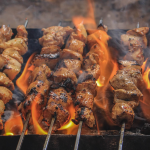
What is the Difference Between BBQ Rub and BBQ Seasoning?
Barbecue, a beloved cooking method that has gained popularity worldwide, is known for its rich and flavorful taste. To achieve those mouthwatering flavors, various ingredients
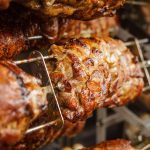
What are the 4 S for BBQ Rub?
When it comes to barbecuing, using a flavorful rub can elevate your dishes to new heights. A BBQ rub is a blend of herbs, spices,
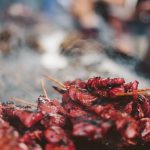
How BBQ Rub Enhances Flavor and Tenderizes Meat
Barbecue is more than just a method of cooking; it’s a beloved culinary tradition that has captured the hearts and taste buds of people all

How Long Do BBQ Rubs Last?
Barbecue rubs are an essential part of the grilling and smoking experience. They add flavor, depth, and complexity to meats, transforming them into mouthwatering delights.
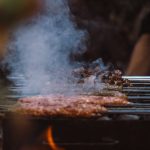
The Ultimate Guide to Creating Homemade BBQ Rubs for Business
Are you a barbecue enthusiast with a passion for flavor? Have you considered turning your love for homemade BBQ rubs into a profitable business venture?

